
 Stephen Dohner
The Hockey Writers
Stephen Dohner
The Hockey Writers
27
Reads
0
Comments
Ducks’ 2020-21 Success or Failure Will Dictate Expansion Draft Decisions
The only thing we know for sure about the 2020-21 season is that it will be the NHL’s last season with 31 teams. Now that the Seattle Hockey Club has become the Seattle Kraken, complete with colors, logos, and a catchy slogan, inaugural general manager (GM) Ron Francis will start the painstaking process of trying to craft a competitive roster when the expansion draft rolls around in the summer of 2021. The former Carolina Hurricanes executive, and his burgeoning scouting staff, will be watching as much hockey as they can over the next 10-12 months to prepare.
They’ll be looking at players at all levels of the 30 teams (the Vegas Golden Knights are exempt) in order to identify talent for the now as well as the future. The Anaheim Ducks, on the other hand, will be doing their own internal scouting in preparation for the very same expansion draft though for very different reasons.
The Ducks’ 2019-20 season came screeching to a halt on March 11, and their 2020-21 season likely won’t begin until at least November of later this year. Anaheim’s players will have had a longer off-season than normal whenever the season starts. For a roster with a few older players and more than a few younger ones, this layoff could prove to be a huge boon or a major problem, and likely a bit of both. With the franchise at a major crossroads, how next season plays out will have a significant impact on what they choose to do the following summer.
Related: A Look Back at the Ducks’ 2014 Draft
Not only will the Ducks front office have to make some difficult decisions regarding who to protect for the expansion draft, as well as what to do with any of the players they don’t protect, but they will also enter the summer with a significant amount of cap space for the first time in quite a while. Come June of 2021 Anaheim should have a much clearer picture of exactly what kind of team they are, and what they need to do next.
Ducks’ Remain in the Lottery
So, what happens if Anaheim continues to be a bottom ten team short on meaningful roster talent? If the Ducks once again find themselves left out of the league’s post-season festivities what does that mean for the upcoming expansion draft? And perhaps more importantly, what does that mean for the organization at large?
In this case, it seems best to start at the top. It’s hard to see Bob Murray keeping his job after a third straight season in the lottery. Now there isn’t anything inherently disgraceful about finishing in the lottery. It’s a natural step in the life cycle of every NHL franchise. It’s hard to have a decade of sustained regular-season success without hitting the wall eventually. The issue for Murray is that he’s sold both ownership and the fan base on the notion that this roster hasn’t been as far away as they have very obviously looked.
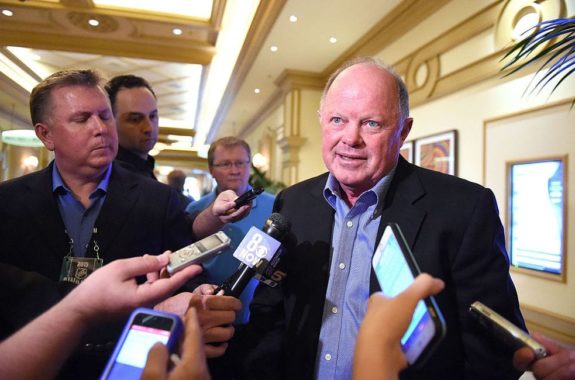
Significant extensions for John Gibson, Jakob Silfverberg, Adam Henrique, and Cam Fowler drive this point home. With the exception of Gibson, it seems inarguable that Anaheim would be in a much better place if they had traded those players for future assets instead of extending them. But Murray chose to keep them. On the basis that they would be key parts of a contending team. Well, Anaheim is in the first or second year of those deals and, if anything, look farther away from competing today than they did when they were signed.
So if the Ducks finish the season closer to 31st than 1st in the league, Murray’s tenure at the top of the Anaheim organizational chart could come to an end. And if that’s the case, it would be fair to assume that whoever comes in next (Save us Eric Tulsky, you’re our only hope!) wouldn’t have any preexisting attachments to anyone on the roster.
Now maybe they come in knowing who they may or may not want to keep, but the expansion draft and a third consecutive lottery pick should give them carte blanche to do whatever they want. Hopefully, that means getting Anaheim’s much-needed rebuild underway.
If so then it would make sense to protect young players with potential and upside as opposed to win-now veterans on bloated contracts. Players like Silfverberg, Josh Manson, Henrique, and Fowler can be exposed knowing that only one of them can be chosen if they are chosen at all.
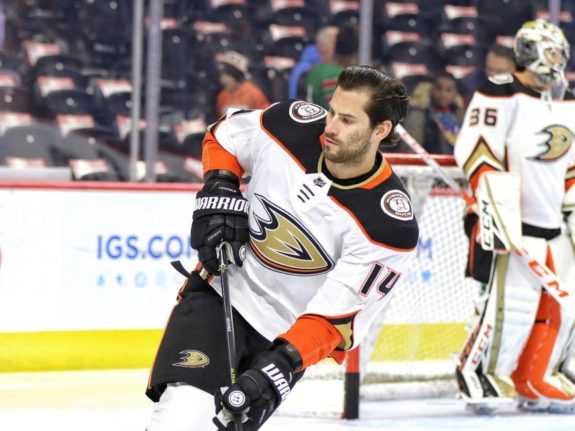
Both Fowler and Manson will be 29 when the expansion draft takes place, while Silfverberg and Henrique will be 30 and 31 respectively. They’re all fine players, to be sure, but at that age and on those contracts, its not a guarantee that Seattle’s front office would take any one of them. And if they did, well, it would clear up quite a bit of cap space for the Ducks who will need to start considering extensions for their young players.
Players from the 2019 entry draft and beyond would be exempt from the expansion draft which would allow Anaheim to protect their more established young players. The likes of Sam Steel, Isaac Lundestrom, Brenden Guhle, and Josh Mahura will need to be protected if they factor into Anaheim’s long-term plans. Then you have to look at the next level up which is essentially the 2020 trade deadline acquisitions. Sonny Milano, Danton Heinen, and Christian Djoos will all be in their mid-20’s, essentially the midpoint of a player’s most impactful years.
So whoever is in charge, whoever that may be, and we have absolutely no way to know – *cough* Eric Tulsky *cough* – will have to decide which players are going to be a part of the team’s future, and then which ones need to be protected. The only two players that aren’t unknowns and could take up a protection slot should any of the younger players underwhelm or get traded prior to the expansion draft, are Hampus Lindholm and Rickard Rakell.
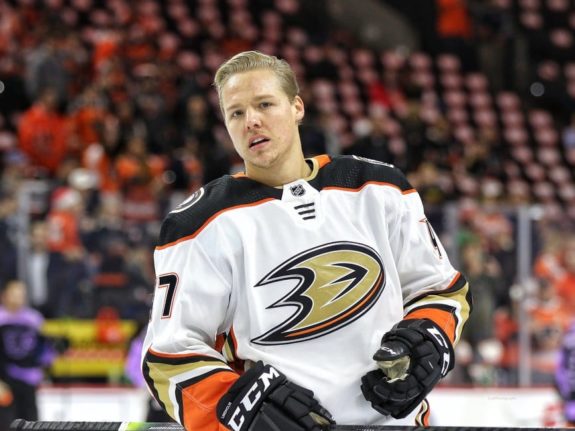
Lindholm will be 27 come mid-January, but his game doesn’t rely on athleticism or strength at all. He has good size and uses his body effectively, but he’s an incredibly cerebral player who skates well and should continue to be effective for a long time in this league. Rakell on the other hand is the Ducks’ most proven goal-scorer and could be an incredibly attractive player for contending teams heading into the 2021-22 season. Unless they plan to trade him before the expansion draft, he is one of their best assets going forward, and losing him to Seattle for nothing would be a calamitous mistake.
So should Anaheim find themselves in the NHL basement again at the end of next season, a protection list like this could make the most sense.
Protected: Rickard Rakell, Sam Steel (RFA), Troy Terry, Isaac Lundestrom (RFA), Danton Heinen (RFA), Sonny Milano, Max Jones (RFA), Hampus Lindholm, Christian Djoos (RFA), Josh Mahura (RFA)
Notables Exposed: Ryan Getzlaf (UFA), David Backes (UFA), Adam Henrique, Jakob Silfverberg, Nicolas Deslauriers, Carter Rowney (UFA), Cam Fowler, Josh Manson, Brendan Guhle, Jacob Larsson, Erik Gudbranson (UFA), Anthony Stolarz (UFA)
What if the Ducks Make the Playoffs?
So, what if, after everything that’s happened over the last 3 years, Anaheim makes the playoffs in 2021? To that end, what if they make it as one of the top 3 divisional seed? Does that vindicate what Murray has been saying? And if so, how does one divvy out the protection slots to balance the contributing youngsters with crucial veterans? To answer these questions, the best place to start might be with the captain.
Getzlaf will be 36 years old at the end of the 2020-21 season. Based on his production the last few years, he is on pace to play over 1,100 games and 22,000 minutes over 16 seasons, as well as surpass 1,000 points. All in an Anaheim Ducks sweater. On top of that, assuming nothing changes between now and then, Getzlaf will be an unrestricted free agent.
Look, Getzlaf is a Mount Rushmore level player for the Ducks. He was a key contributor to their run to the Stanley Cup in 2007, and his tenure as captain has coincided with the most successful era in franchise history. Ultimately, what he wants will be up to him. It’s hard to imagine that anyone in Anaheim, from ownership all the way down to the fans, wants to have a Mike Modano situation on their hands, especially considering how poorly the Corey Perry buyout has been received by some. The question is how much does Getzlaf think he has left, and what kind of role does he want?
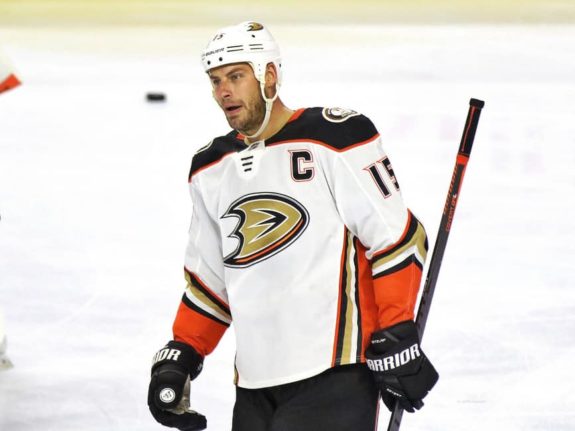
Should the Anaheim Ducks play well enough to firmly secure a playoff spot in 2021, there should be a decent amount of information regarding both questions. In order for Anaheim to make the playoffs one of two things would have to happen; either Getzlaf would have to turn in a Hart caliber season, at 35, helping Gibson and a revitalized defense corp drag the rest of the roster to relevance – or – Anaheim’s young forwards finally make the leap and produce at a level commensurate with Murray’s expectations of them.
But short of Fowler posting 100 points or Gibson becoming the best player in hockey for a year, it’s going to be one of those two things. Because at the end of the day Anaheim’s biggest liability is their offense, or more accurately, the lack thereof.
If it’s Super Getzy, well then you have to wonder how repeatable that type of season is, and you have to start worrying about why none of the ducklings have developed. The likelihood of Getzlaf putting up another incredible season at age 36 is less likely than it was at 35. That’s how aging curves work. Now if it’s Option B, if Anaheim’s young players finally establish themselves as legitimate NHLers and – in conjunction with the older, more established players – create something resembling a competitive top-9, well then you have the same problem just for different reasons. What do you do with Getzlaf?
The answer might actually be the same both ways; leave it until after the expansion draft. It doesn’t make sense to extend Getzlaf during the season and then have to burn a protection slot on him. As a UFA he would still be eligible for selection, but he would be under no obligation to sign an extension with Seattle. And since he would most likely just walk once free agency started, there’s no value in selecting him when Seattle can take a different player under contract who can contribute to the franchise for the foreseeable future.
The problem there is, Getzlaf has to agree with that plan and not demand a contract extension during the season. If he does it would be difficult to tell him no, especially in the middle of a successful campaign.
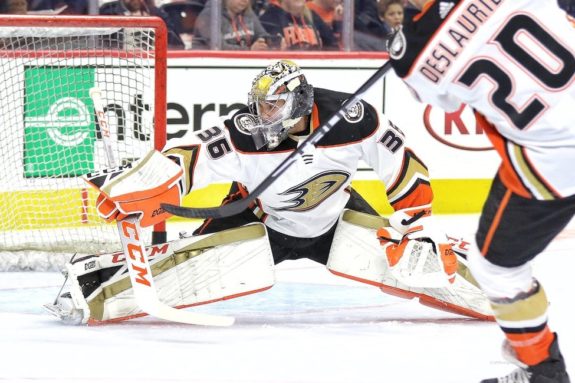
Now where Getzlaf’s level of play does help, is deciding which players to protect and which to expose. If it’s the aforementioned Super Getzy, then the list is probably just the team’s best 8 skaters plus Gibson. At that point, there is no reason to go 7F/3D/1G because its hard to imagine the team would have 10 skaters total worth keeping.
If Gudbranson were to continue to excel in a second pair role alongside Fowler and earn a contract extension, then maybe protecting 4 defensemen makes the most sense. Perhaps Djoos, Mahura or Guhle even make a strong push to be considered for a protection slot. In that case, Gudbranson and Fowler might end up on the outside looking in, although a trade would be the most logical way to solve those problems.
Then you simply pick your best four forwards and call it a day. Likely some combination of Silfverberg, Rakell, Steel, Jones, Terry, Lundestrom, and Milano. If it’s the latter, if Anaheim’s young players finally step up, then things get interesting. Deciding between the 8&1 and 7/3/1 protection options becomes a bit more difficult.
If Zegras shows enough promise early then protecting Rakell and Silfverberg is essentially a given. As they showed when paired with Steel this year, those two seem to be remarkably well suited to insulating young centers as they acclimate to the NHL. Henrique has proven to be a perfectly fine hockey player and exactly the guy Anaheim thought they were getting when they traded for him. Unfortunately for Uncle Rico protecting him becomes far less necessary if Steel and Zegras become impact players next season and Getzlaf wants to come back.
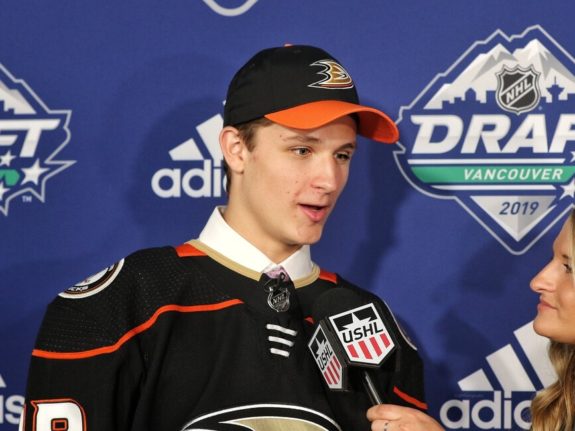
Milano has some scoring upside the rest of the Anaheim roster desperately lacks. Meanwhile, Heinen appears to offer the type of lineup versatility coaches and general managers love, even if he never develops beyond a 20-30 point player. But they’ll both need to start making significant contributions to earn a protection spot over younger players.
Max Jones should end up being a solid top-9 wing who can shuttle up and down the lineup as needed, and has shown an ability to make plays for others. Lundestrom has had limited opportunities to impress in the NHL given his age and the players ahead of him but hasn’t looked completely out of his depth in those few chances.
Steel and Terry are the biggest question marks here. They both have probably the highest upside of the nine players under consideration since neither Zegras nor Comtois will be eligible. But if they haven’t made the leap to full-time middle-six NHLers by the end of next season it would be hard to assume they were totally safe.
Yet, if the Ducks are a legitimate playoff team next season then at least one, if not both forwards, should play a major role in getting there. And should Anaheim return to contention without their help, that might answer the question on its own. Ultimately, in a world where the Ducks are somehow contenders next year, it might be safest to assume that the eight to 10 best players will be protected and everyone else will have to sweat it out.
Protected: Rickard Rakell, Jakob Silfverberg, Adam Henrique, Sam Steel (RFA), Max Jones (RFA), Danton Heinen (RFA), Troy Terry, Cam Fowler, Hampus Lindholm, Josh Manson, John Gibson
Notables Exposed: Ryan Getzlaf (UFA), David Backes (UFA), Nicolas Deslauriers, Carter Rowney (UFA), Christian Djoos (RFA), Josh Mahura (RFA), Brendan Guhle, Jacob Larsson, Erik Gudbranson (UFA), Anthony Stolarz (UFA)
The Mushy Middle
The third possible outcome that bears some consideration is what happens if it’s neither? What if Anaheim finishes somewhere between snagging the last wildcard spot or just missing out on the top 10 in the draft lottery? Does it depend on which side the finish closer to? Is there any room for nuance and context like major injuries? The answer there I suppose is – maybe?
The truth is if Anaheim misses the playoffs but not by much, Murray probably keeps his job, and he probably puts forward a protected list closer to the second than the first. Then Anaheim fans are left wondering exactly what the team is doing, who the team is or will be built around, and what the expectations are going forward.
If the Ducks finish, say, 12th from the bottom, then Murray might still keep his job, and fans get another summer of “I wasn’t happy with my leadership group” and “I will be demanding accountability next season” and “now all we can do is hope for some luck in the lottery” from the GM. Maybe they fire Eakins but probably not. Small market teams that are already hurting from the economic fallout due to the COVID-19 pandemic probably aren’t going to be in a position to pay multiple head coaching salaries.
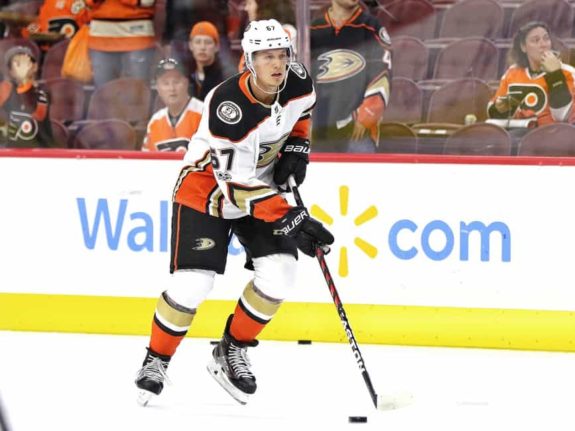
Maybe a player or two is moved at the deadline and that solves some of Anaheim’s protection issues. Rakell, Manson, and Lindholm will each have an additional year remaining on their contracts and could be attractive options for contending teams. Likewise, Getzlaf, Backes, and Rowney will all be on expiring deals and could generate various levels of interest around the league. But there is no reason to think Murray would be open to moving any of his major pieces. He has remained alarmingly committed to this current group despite repeated comments about major changes needing to be made.
Related: Teemu Selanne’s Unbreakable Record
Meanwhile, Gibson will be a year older, the Ducks’ major prospects from the last half-decade or so will continue to underwhelm, and Anaheim fans will get to have the same conversations and ask the same questions they’ve been having and asking for years. How close are the Ducks to competing? Do the Ducks need to tear it all down? All the while hoping that by the end of the coming season they will be closer to a clear and coherent plan.
If hockey fans have learned anything over the last several years, it’s that almost anything can happen at any given time. From the unimaginable to the incomprehensible, fans have come to couch any predictions, opinions, or prognostications in the understanding that no one really knows anything about what’s going to happen at any given time. This makes the league as a whole incredibly exciting, but it can make rooting for individual teams immensely frustrating. For Anaheim fans, it has been a lot more of the latter than the former, and with so many significant markers on the horizon, all they’re asking for is some answers.
The post Ducks’ 2020-21 Success or Failure Will Dictate Expansion Draft Decisions appeared first on The Hockey Writers.
Popular Articles

















































 Blackhawks Chicago
Blackhawks Chicago Panthers Florida
Panthers Florida Penguins Pittsburgh
Penguins Pittsburgh Rangers New York
Rangers New York Avalanche Colorado
Avalanche Colorado Kings Los Angeles
Kings Los Angeles Maple Leafs Toronto
Maple Leafs Toronto Bruins Boston
Bruins Boston Capitals Washington
Capitals Washington Flames Calgary
Flames Calgary Oilers Edmonton
Oilers Edmonton Golden Knights Vegas
Golden Knights Vegas Islanders New York
Islanders New York Sabres Buffalo
Sabres Buffalo Red Wings Detroit
Red Wings Detroit Senators Ottawa
Senators Ottawa Lightning Tampa Bay
Lightning Tampa Bay Flyers Philadelphia
Flyers Philadelphia Devils New Jersey
Devils New Jersey Hurricanes Carolina
Hurricanes Carolina Blue Jackets Columbus
Blue Jackets Columbus Predators Nashville
Predators Nashville Wild Minnesota
Wild Minnesota Blues St. Louis
Blues St. Louis Stars Dallas
Stars Dallas Jets Winnipeg
Jets Winnipeg Mammoth Utah
Mammoth Utah Sharks San Jose
Sharks San Jose Canucks Vancouver
Canucks Vancouver Ducks Anaheim
Ducks Anaheim






